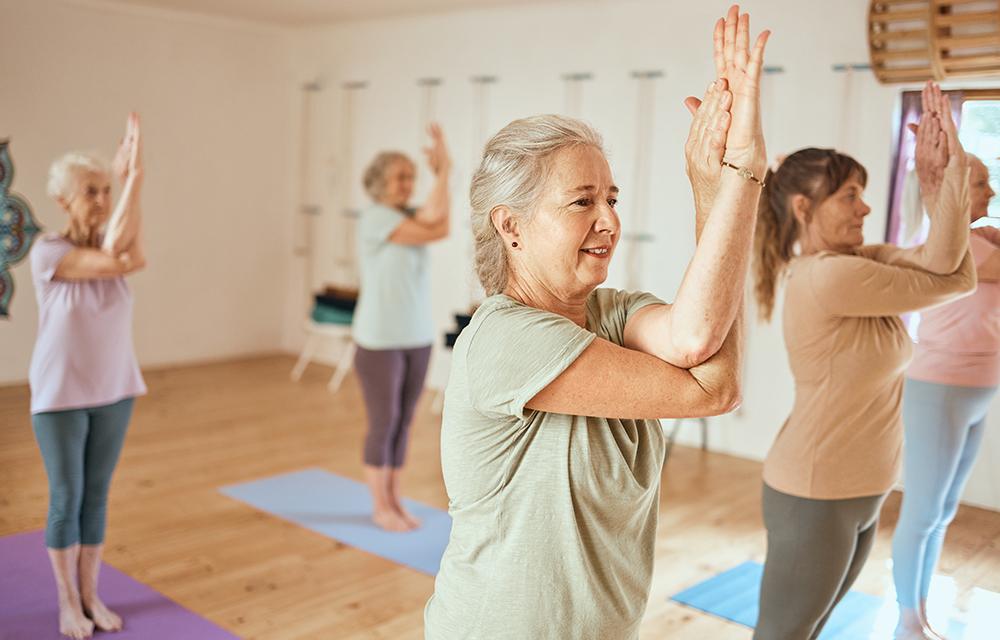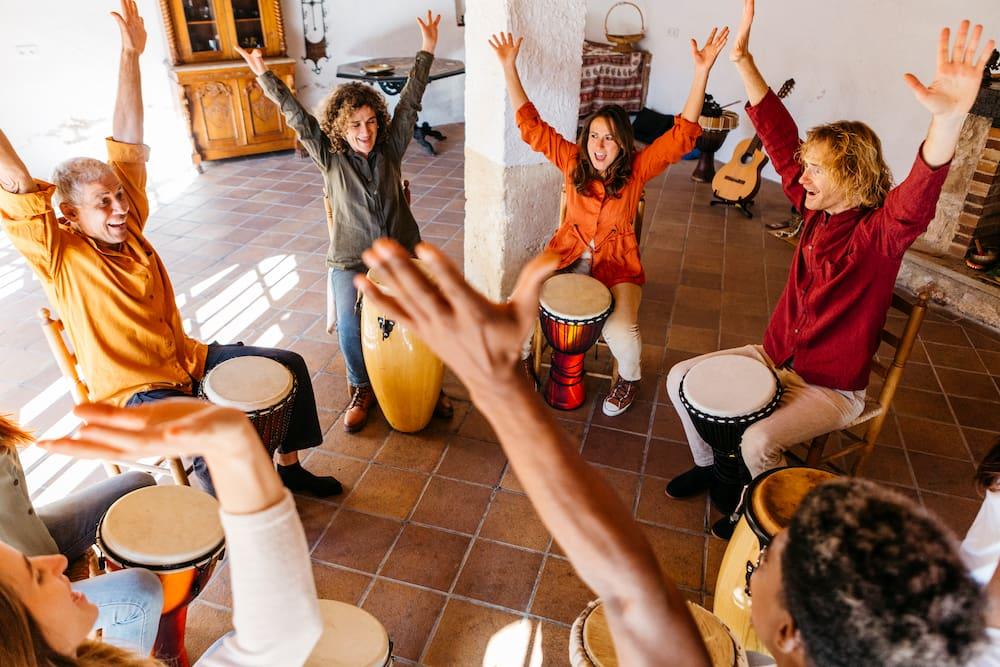
The environments in which we live and work impact our quality of life in multiple ways. Having access to meaningful interactions with others along with access to healthcare services and meeting basic needs impact our health and well-being as individuals and as communities.
There is a growing evidence base demonstrating the health benefits of engaging in the arts. The World Health Organization (WHO) has described how arts engagement encourages recovery and promotes a more holistic approach to healthcare. For centuries, humans have created and expressed through the arts to make sense of our world, to connect with others, and to contribute to our environment in impactful ways.
Arts and Health encompasses multiple disciplines and sectors that use the arts to impact or support the health and well-being of individuals and communities. At Ohio University, there are multiple programs, collaborations, and community opportunities available to engage with the arts for improved quality of life and well-being.
Arts in Health practitioners:
- can work collaboratively with creative arts therapists and other healthcare professionals to support a range of needs and promote quality of life in individuals and groups through their art discipline.
- can engage in collaborative research and community program development.
- can use their arts practice to deepen connections with individuals with diverse experiences and needs.
- can work with a wide spectrum of communities in a variety of settings, including but not limited to:
- nonprofit and for-profit health care facilities
- hospitals, medical centers, and long-term care facilities
- mental health programs
- schools/educational settings
- veterans’ facilities and military bases
- community centers and wellness programs
The Arts in Health initiative at Ohio University supports:
- connecting individuals and communities to the arts for the purpose of promoting well-being.
- collaborating across the university and with community partners to develop or enhance programs.
- generating important understanding about the diverse health benefits of engaging with the arts.
Graduate Level Degree Offerings
Our Mission
To provide opportunities for creative arts therapists, arts and health professionals, arts administrators, medical and healthcare professionals, community members, and other researchers to learn, collaborate, and innovate arts-based research and initiatives for the well-being and health of individuals and the communities in which we live.
Our Vision
The Ohio University Arts in Health program upholds its mission through promoting existing and emerging related programs, supporting university-wide collaborations and connections with community and other external partners, and developing research initiatives that center the arts as an important component for well-being and health across disciplines and in diverse environments.
An Emerging Field of Study and Practice
Under the broad umbrella of arts and health, several disciplines have emerged which are interrelated yet distinct.
- Clinical Disciplines
- The Creative Arts Therapies include the separately regulated health professions of art therapy, dance/movement therapy, drama therapy, music therapy, poetry therapy, and psychodrama therapy- established between the 1930’s and 1960s in the United States. These professionals work in diverse healthcare, educational, and community settings.
- Expressive Arts Therapies include approach to psychotherapy that draws from a variety of art forms, or intermodal disciplines, to address needs of individuals. Is a profession with its own standards and requirements.
- Arts in Health also commonly referred to as Arts in Healthcare or Arts in Medicine , began to emerge as a discipline in the 1970’s. Professionalization of the field is rapidly evolving and the recognition of the importance of the arts to promote health and well-being in community and healthcare settings is increasing. Artists-in-residence and other arts in health professionals are now regularly working in diverse settings.
- Arts in Public Health is emerging in alignment with the national and global priority to enhance population health through wellness and prevention, with a focus on increasing equitable access to services.
-
Talking Studio “Embracing monsters” Epsiode on Mental HealthListen (Podcast)How expressive art forms can inform healing and recovery in mental health. The OHIO Co-Arts organization supports programs that serve the healing of those living in the Appalachian Ohio region and beyond by bringing art into the health care space.
-
The Healthy Village: Immersive Healthcare TheaterFounded on the idea that professionals in Theater and Healthcare have a lot to teach each other about the power of storytelling, the challenges and triumphs of the human condition, and holding space for ambiguity, empathy, and reflection.
-
SHAPe Clinic Supports Wellness in Performing Arts StudentsCommunity-engaged research connects health care and performing artists. The Clinic for Science and Health in Artistic Performance (SHAPe Clinic) specializes in working with performing artists, offering treatment and health and wellness advice to dancers, musicians, actors, theater production personnel and the Marching 110 here at Ohio University.
-
Vocal Wellness ProgramThe Vocal Wellness Program (VWP) in the School of Music at Ohio University is a collaboration between the Voice Division and the Division of Hearing, Speech, and Language Sciences in the College of Health Sciences and Professions. The VWP operates in Glidden Hall, and provides baseline voice examinations as well as acute and post-acute examinations free of charge for students in the Chaddock + Morrow College of Fine Arts enrolled or participating in voice, choral or acting coursework in the college.
-
Ohio Valley Center for Collaborative ArtsOhio Valley Center for Collaborative Arts (or CoArts, for short) connects Ohio University’s creative and cultural resources with community development efforts, while supporting applied research and learning opportunities for faculty and students.
-
Bobcats ArtcareThe Bobcat ArtsCare Program strives to connect each OHIO student to meaningful arts-based experiences that reduce stress, create social connections, improve mood, and support overall mental and physical wellness
Program Contact:
For more information and answers to questions, please contact:
Sharon R. Boyle, D.H.Sc., LPMT, MT-BC
Associate Professor of Music TherapyDirector of Arts in Health
boyles2@ohio.edu

